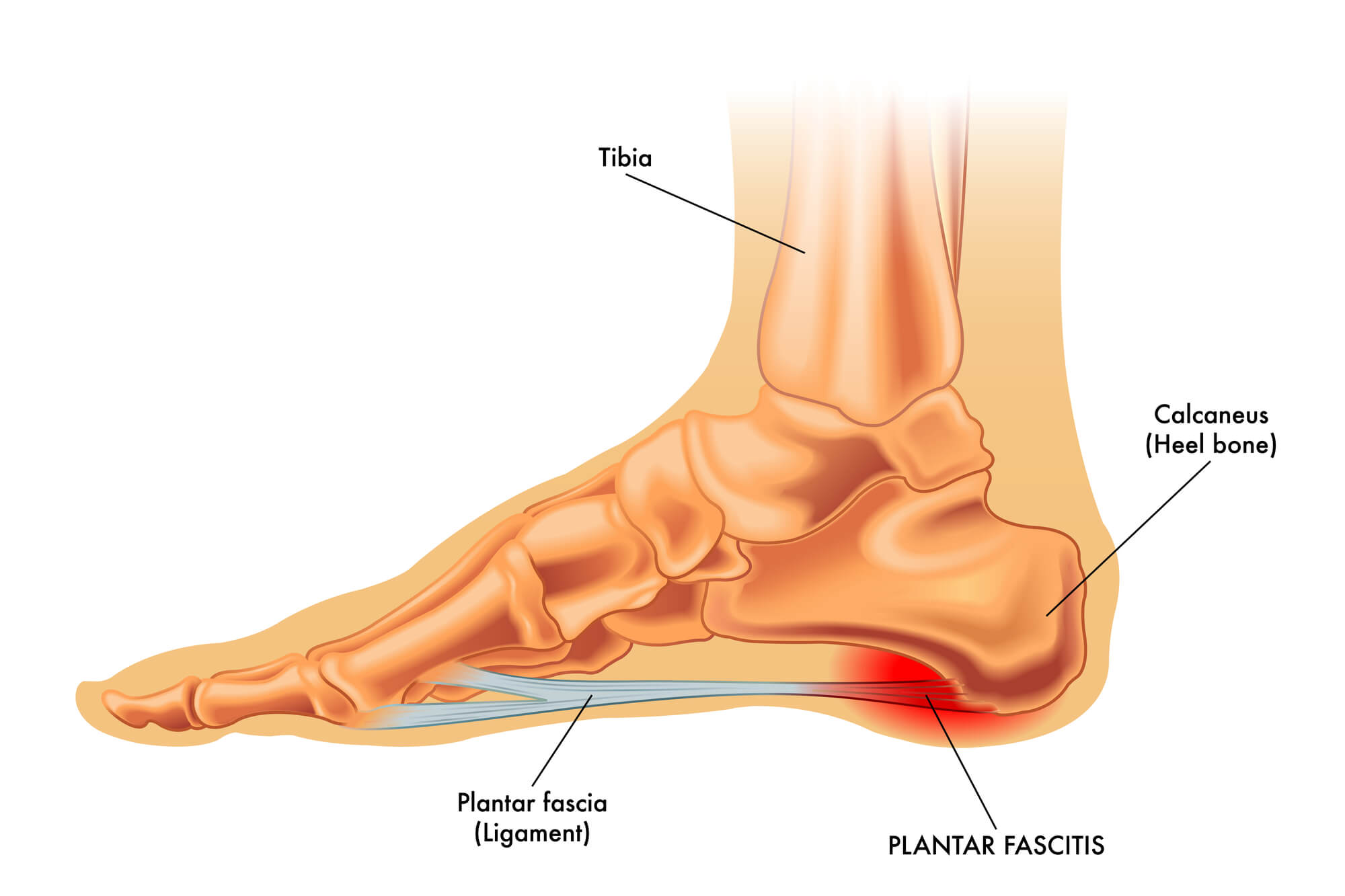Plantar Fasciitis Surgery
Plantar fasciitis is a common cause of heel pain, affecting about 10% of the population at some point in their lives. The condition is caused by inflammation of the plantar fascia, a band of tissue that runs along the bottom of the foot from the heel to the toes. It supports the arch of the foot and helps you push off when you walk or run. When the plantar fascia becomes inflamed or strained, it can cause pain, swelling, and stiffness in the heel and along the bottom of the foot.
If you are experiencing persistent heel pain and other non-surgical treatments have not provided relief, you may be considering plantar fasciitis surgery. This article will provide an overview of the procedure, including its purpose, types of surgery, and recovery process. We will also discuss the risks and benefits of plantar fasciitis surgery and when it may be necessary.
What is Plantar Fasciitis Surgery?
Plantar fasciitis surgery is a procedure performed by a podiatrist or foot and ankle surgeon to release or remove the plantar fascia to relieve pain and improve function. The surgery aims to reduce inflammation and restore normal movement in the foot.
There are two main types of plantar fasciitis surgery: open surgery and endoscopic surgery. Open surgery involves making an incision in the heel to access the plantar fascia directly. The surgeon may release the plantar fascia partially or completely, depending on the severity of the condition. Endoscopic surgery is a less invasive procedure in which the surgeon uses small instruments and a camera to access the plantar fascia through several small incisions in the heel.
Both types of surgery can be performed under local or general anesthesia, depending on the patient's preference and the complexity of the procedure. The surgery typically takes about one to two hours to complete.

Risks and Benefits of Plantar Fasciitis Surgery
Like any surgery, plantar fasciitis surgery carries certain risks, including infection, nerve damage, and bleeding. However, the procedure is generally safe and has a high success rate. Studies have shown that plantar fasciitis surgery can significantly reduce pain and improve function in most patients.
There are several benefits to plantar fasciitis surgery, including:
- Relief of chronic pain: Plantar fasciitis surgery can provide long-term relief from heel pain and other associated symptoms.
- Improved function: After the surgery, patients may walk and run more comfortably and with less pain, improving overall function in the foot.
- Quick recovery: Most patients can return to their normal activities within a few weeks after the surgery.
When to Consider Plantar Fasciitis Surgery
Plantar fasciitis surgery is usually reserved for patients who have tried other treatment options, such as rest, stretching, physical therapy, and medications but have not seen improvement in their symptoms. It is important to note that plantar fasciitis surgery is not always necessary and should be considered only after other options have been exhausted.
If you are considering plantar fasciitis surgery, discussing the procedure with a podiatrist or foot and ankle surgeon is important. They will be able to evaluate your specific condition and help you determine if the surgery is the best option for you.

Preparing for Plantar Fasciitis Surgery
Before the surgery, you will have a consultation with a podiatrist or foot and ankle surgeon to discuss the procedure and any questions or concerns you may have. They will also review your medical history and conduct a physical examination to determine if you are a good candidate for the surgery.
You may be asked to stop taking certain medications or supplements before the surgery to reduce the risk of bleeding. You may also be advised to avoid eating or drinking anything after midnight the night before the surgery.
On the day of the surgery, you will need to arrive at the hospital or surgery center a few hours before the procedure. You will be given instructions on what to wear and bring with you, such as identification and insurance information.
During the Surgery
The surgery typically takes one to two hours to complete. You will be given local or general anesthesia, depending on your preference and the complexity of the procedure.
The surgeon will make an incision in the heel to access the plantar fascia during the surgery. They may release or remove the plantar fascia partially or completely, depending on the severity of the condition. Once the surgery is complete, the incision will be closed with stitches or staples.

Recovering from Plantar Fasciitis Surgery
After the surgery, you will be taken to a recovery room to be monitored until the effects of the anesthesia have worn off. You will be given pain medication to help manage any discomfort you may feel.
Most patients can go home the same day as the surgery, although some may need to stay in the hospital overnight. You will be given instructions on how to care for the incision and manage any pain or swelling. You may also be given a walking boot or cast to protect the foot and help with mobility.
Following your doctor's instructions for post-surgery care is important, including taking any prescribed medications and attending physical therapy as directed. You will need to avoid putting weight on the foot for some time, and you may need to use crutches or a walker to help with mobility.
The recovery process after plantar fasciitis surgery varies from person to person. Most patients can return to their normal activities within a few weeks, although it may take several months for the foot to heal fully.

Possible Complications and Risks
Like any surgery, plantar fasciitis surgery carries certain risks, including infection, nerve damage, and bleeding. However, the procedure is generally safe and has a high success rate. It is important to discuss the potential risks and complications of the surgery with your doctor before making a decision.
Conclusion
Plantar fasciitis surgery is a procedure performed to relieve pain and improve function in the foot caused by inflammation or strain of the plantar fascia. There are two main types of surgery: open surgery and endoscopic surgery. The procedure carries certain risks but has a high success rate and can provide long-term relief from heel pain and other symptoms associated with plantar fasciitis. If you are considering plantar fasciitis surgery, it is important to discuss the procedure with a podiatrist or foot and ankle surgeon and follow their instructions for post-surgery care to ensure a successful recovery.

